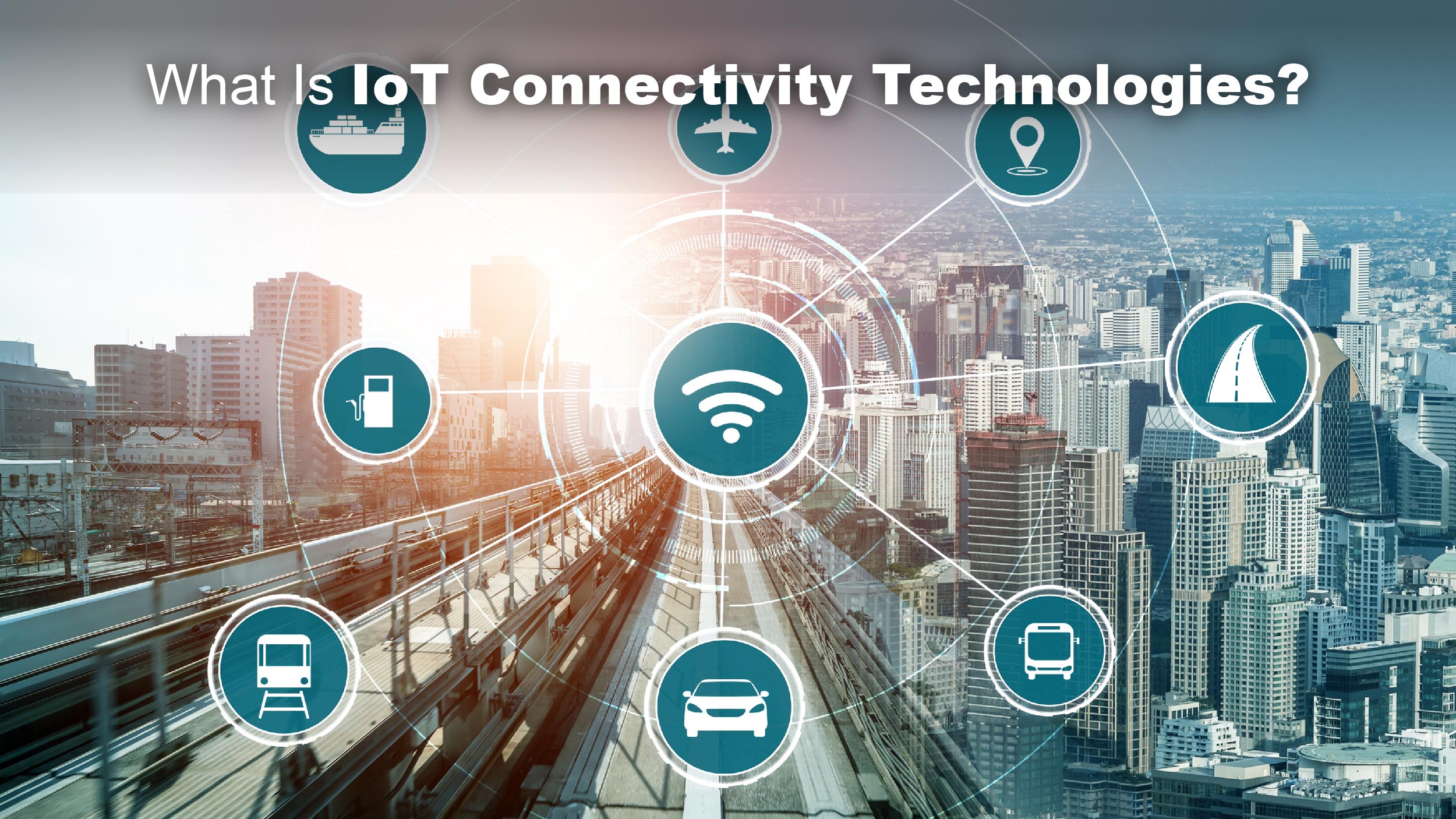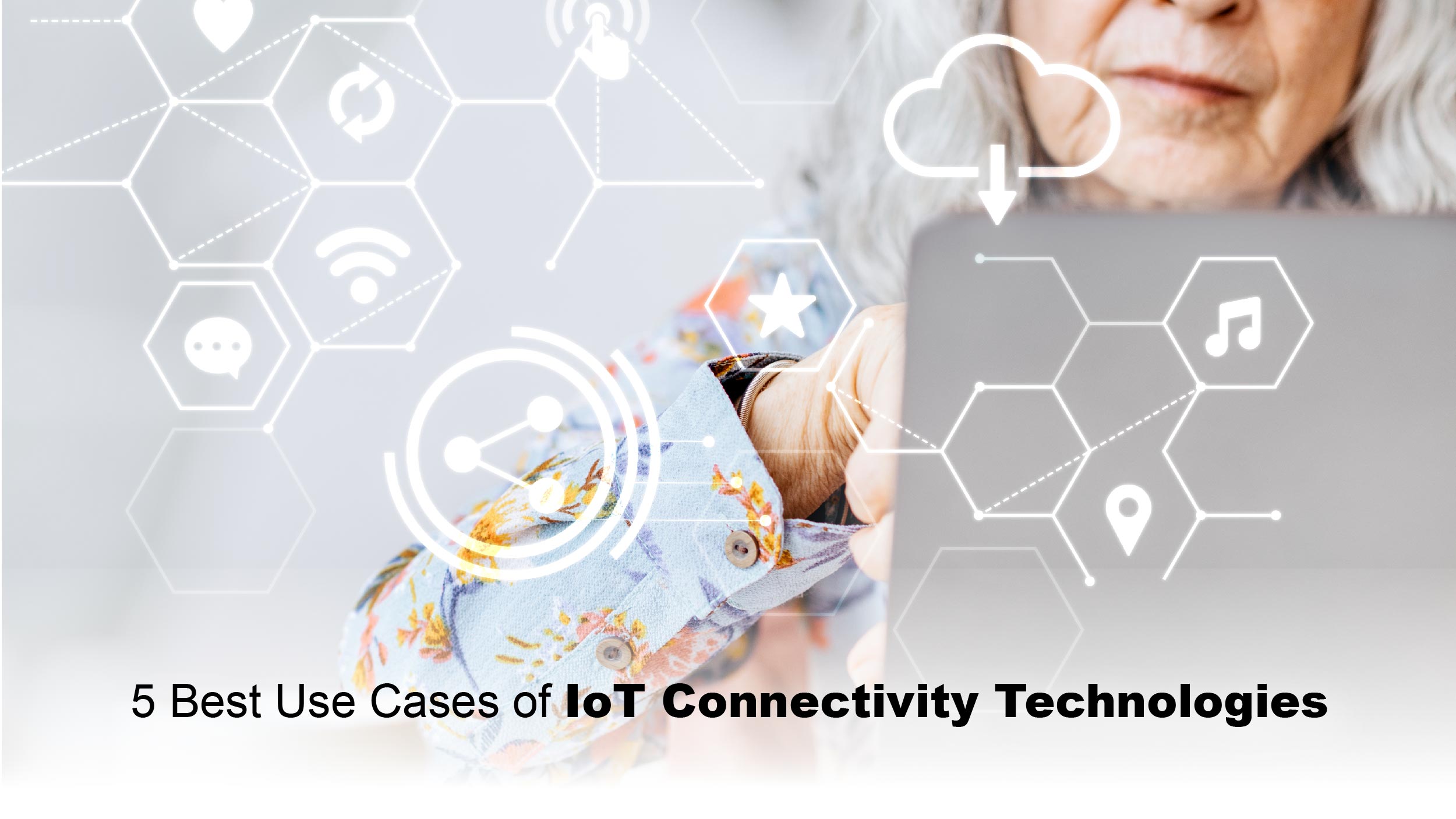Imagine living in a world where commonplace objects are smoothly communicating with one another to improve the efficiency and ease of our daily lives. The Internet of Things, or IoT, has completely changed the way we interact with technology. It is predicted that by 2030, there will be over 32.1 billion Internet of Things devices globally, nearly doubling from 15.9 billion in 2023. Examples of connectivity technologies in IoT include smart home appliances that change the temperature when we step in the door and wearable fitness trackers that continuously monitor our health. These gadgets can establish a connection and exchange messages with one another because of IoT networking technologies. Let’s learn more about it.
What Is IoT Connectivity Technologies?
IoT connectivity technologies refer to the various methods and protocols used to connect IoT devices to the internet or each other. These technologies enable communication, data transfer, and control capabilities for IoT devices. IoT connectivity technologies flourish, with over 29 billion of these connections anticipated by 2027.
Why Does IoT Connectivity Matter?
The choice of IoT connectivity technology can significantly impact the performance, cost, and scalability of your IoT solution. For some applications, high-speed, ultra-low latency connectivity is essential. In such cases, adopting 5G or 4G cellular IoT connectivity might be the best option, despite the higher costs and power usage associated with these technologies. Conversely, simpler deployments might benefit from low-speed connections that aren’t always active, requiring smaller batteries and offering more cost-effective IoT connectivity.
Also Read: What Is IoT Analytics? Challenges & Use Cases
5 Best Use Cases of IoT Connectivity Technologies
Let’s explore five prevalent IoT connectivity technologies and their primary use cases.
1. Cellular
Cellular networks are ubiquitous in daily life, powering devices like phones and tablets. They leverage existing infrastructure, providing wide coverage, reliability, and enhanced security compared to other options. Cellular is ideal for mobile IoT systems and offers an alternative to LPWAN technologies like Sigfox and LoRaWAN.
Use Cases:
- Point of Sale and Kiosks: Enables vending machines and kiosks to operate without relying on Wi-Fi, expanding retail opportunities.
- Delivery Tracking: Ensures real-time tracking of shipments across diverse environments, including remote or mobile scenarios.
2. High Data Rate Cellular (3G/4G/LTE/5G)
Offering high Mbps speeds, this option suits data-intensive IoT applications, mobile devices, and real-time video streaming. With robust coverage and infrastructure support, it facilitates “massive IoT” deployments connecting thousands of devices across large areas.
Use Cases:
- Fleet Management: Real-time tracking optimizes fleet operations, enhancing route planning and fuel efficiency.
- Health Monitoring: Enables continuous health data transmission from wearable devices to healthcare providers, ensuring prompt intervention regardless of location.
3. Ethernet
Ethernet provides a reliable, low-latency wired connection, ideal where infrastructure is already in place. It offers stable performance unaffected by physical barriers, making it suitable for stationary IoT devices.
Use Cases:
- Security Cameras: Ensures uninterrupted video surveillance in homes or businesses, leveraging stable connectivity.
- Game Systems: Minimizes latency for gamers seeking reliable network performance.
- Stationary Medical Devices: Facilitates real-time data transmission from medical equipment to centralized systems in healthcare settings.
4. Wi-Fi
Commonly used in homes and offices, Wi-Fi supports secure, high-bandwidth connectivity within a limited range. It is ideal for localized IoT ecosystems where devices are confined to a specific area.
Use Cases:
- Smart Gadgets: Integrates smart devices like TVs and appliances into home networks for seamless operation.
- Digital Signage: Enables content updates and management in commercial settings with existing Wi-Fi infrastructure.
5. Bluetooth
Bluetooth excels in connecting small, battery-powered devices within short ranges, typically up to 30 feet. It offers low energy consumption and is widely used in consumer electronics and small-scale IoT deployments.
Use Cases:
- Smartwatches or Fitness Trackers: Syncs health data to smartphones, facilitating mobile monitoring and user interaction.
- Bluetooth Low Energy Sensors: Collects and transmits data from sensors in compact environments, such as homes or small businesses.
These technologies cater to diverse IoT needs, each offering unique advantages in terms of range, bandwidth, power efficiency, and scalability. Choosing the right connectivity technology depends on specific application requirements and environmental considerations.
What Needs Should Your IoT Connectivity Solution Meet?
Every use case has specific requirements, which translate into particular technology needs that drive the choice of the most suitable connectivity technology. These requirements generally fall into three categories:
- Technical Requirements: These include considerations like data speed, latency, range, power consumption, and network coverage. For instance, high-speed applications with real-time data needs might necessitate advanced cellular technologies, while low-power, long-range deployments might lean towards LPWAN solutions.
- Commercial Requirements: Cost is a significant factor. This includes not only the initial setup costs but also ongoing operational expenses. Technologies that require less power and simpler infrastructure can reduce costs, making them attractive for large-scale deployments with budget constraints.
- Ecosystem Requirements: The existing technology ecosystem within an organization can also influence the choice. Compatibility with current systems, the availability of support and development resources, and the ability to integrate with future technologies are crucial considerations.
What Factors Should Influence Your Decision?
Selecting the most suitable connectivity technology involves a careful assessment of each deployment’s characteristics. This strategic decision can affect the immediate performance and cost-efficiency of your service and its long-term scalability and future-proofing.
End Note
The field of IoT connectivity technologies has much potential and promise going forward. The IoT ecosystem is changing daily due to developments in low-power protocols, wireless networks, and upcoming technologies.
We anticipate significant advancements in connectivity technology in the years to come. 5G network implementation will offer extremely low latency and lightning-fast speeds, facilitating seamless communication and new possibilities for real-time applications.




